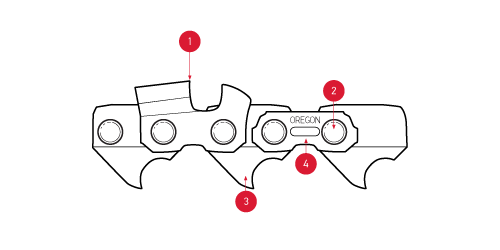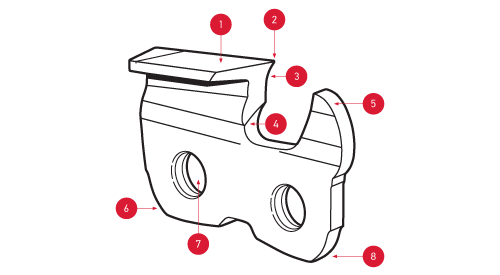|

|
1. Cutter: This is the part of the chain that actually cuts through the wood.
2. Rivet: These are the small metal pieces that hold the chain together.
3. Drive Link: This component transfers the motion and power from the chainsaw to the cutter.
4. Tie Strap: This component helps to keep the chain stable and in place during operation.
|
 |
1. Top Plate: The top plate is the uppermost part of the cutter, serving as the primary contact point with the material being cut.
2. Cutting Corner: The cutting corner is the edge or area of the cutter responsible for making the actual cutting action.
3. Slide Plate: The slide plate is a movable part of the cutter that facilitates smooth and controlled cutting motion.
4. Gullet: The gullet is the recessed area between the cutting teeth, which helps in chip removal during cutting.
5. Depth Gauge: The depth gauge controls the amount of material removed during each cutting pass, ensuring precision and accuracy.
6. Heel: The heel of the cutter provides stability and support during the cutting process.
7. Rivet Hole: The rivet hole is the location where the rivet secures different parts of the cutter together.
8. Toe: The front part of the cutter that aids in guiding and positioning during use.
|
Source: oregonproducts.com

